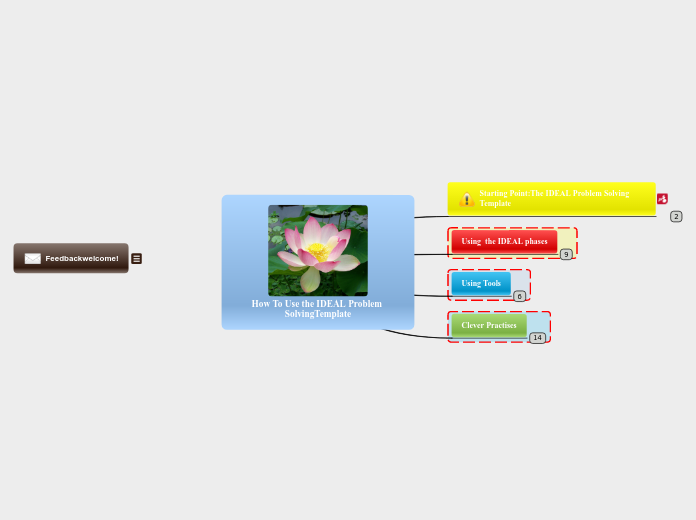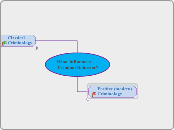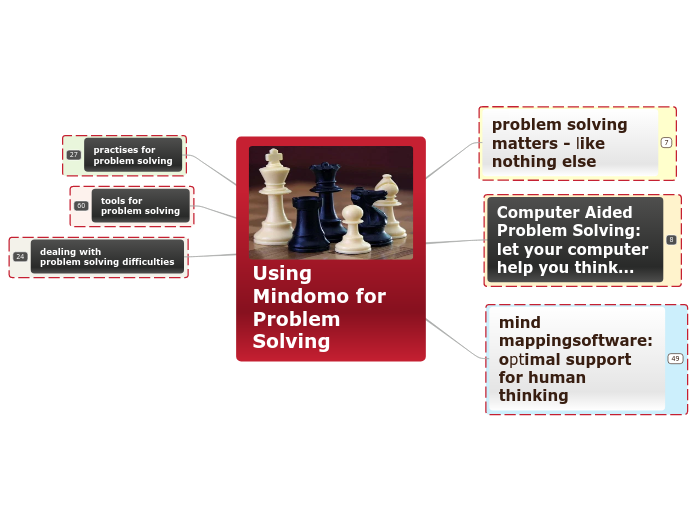Learning Environments
The first division between continents was made by ancient Greek navigators, who named them 'landmass, terra firma'.
Generally classified by convention rather than any strict criteria, nowadays seven regions are regarded as continents from a geopolitical point of view.
Learners' role
Antarctica is not only the coldest place on Earth but also the highest, driest, windiest and emptiest, completely covered with ice.
75% of the world's ice and 70% of the Earth's fresh water is located here.
Summer months of December to February give 24 hours of light, while the winter months of late March to late September are pitch dark the whole day.
There are no permanent inhabitants, except for scientists maintaining research stations in Antarctica.
Be responsible; greater involvement and dedication in their learning processes.
the student becomes the main character, since the knowledge will be chosen and transmitted based on the information and motivation demonstrated by the student.
Learners have to develop some competences, including creativity, problem-solving, leadership, empathy and communication to name just a few, are increasingly in demand in the context of rapidly changing societies and labour markets.
An objectivist view of the world
Antarctica sees half a year of light and half a year of complete darkness.
Write down which months give 24 hours of light, and which are the ones that give pitch darkness the whole day.
The learner’s job is to acquire that coal or knowledge and then use it as necessary, either with or without the help of the teacher.
The coldest natural temperature ever recorded on Earth was recorded here.
Write it down.
Methods
You can find on this continent:
- the world's largest river as per water volume, the Amazon.
- the highest volcanoes of the world -- Mt. Cotopaxi and Mt. Chimborazo.
- the country, Brazil, which is the largest coffee producer in the world.
- the second-highest mountain range in the world, the Andes.
Student-centered Learning
Write down the temperatures of the Frozen Continent during the summer and the winter.
the student-centered model, as opposed to teacher-centered, is more effective in deep understanding because it connects the student with a wider range of experiences
This perspective to be more effective to promote learning, combined with the
increased awareness on the demands of technological skills, required in today's world of work.
The term “Learner-centered learning” can be considered an umbrella term that encompasses
different well-known teaching and learning practices, including project-based learning, personalized learning or social-emotional learning.
A positive school climate creates a safe and favorable environment that cultivates social
and emotional, ethical and academic skills.
The largest forest, which covers 30% of South America's total area, is famous for its biodiversity. It’s crisscrossed by thousands of rivers, including the powerful Amazon.
Name this forest as well as its type.
Correa (2008) affirm that learning environments should not be limited to a specific moment in the learning process
The world's highest uninterrupted waterfall can be found here.
Write down its name, height and the country in which you can find it.
He identifies three stages
AFTER: where the students individually or collectively create links and advance in their own learning.
DURING: represents the essence of the process,
where the most important approaches and actions are developed, confronted and specified
BEFORE: represents the set of preparatory activities, which could serve as guidelines or introductory steps
Innovative learning environments foster the
“active engagement” of learners, otherwise
they can hardly be expected to participate
in a meaningful way.
There are 12 countries that make up South America.
Name as many of you can! Don't forget about their capitals.
The School Climate
North America has five time zones and it is the only continent with every type of climate.
North America was named after the explorer Amerigo Vespucci and is also known as the 'New World'.
The world's largest sugar exporter among the seven continents - Cuba - also called the 'sugar bowl of the world' is located here.
Students, families, and educators work together to develop and contribute to a shared school
vision.
The specialty of some animals is they are found only in a particular region and nowhere else in the world. North America is home to many of such amazing animals.
Name at least 6.
People are engaged and respected.
Native Americans have lived along this river and its tributaries for thousands of years. Most were hunter-gatherers, but some formed agricultural societies.
Formed from thick layers of the river's silt deposits, this river's embayment is one of the most fertile regions of the United States; steamboats were widely used in the 19th and early 20th centuries to ship agricultural and industrial goods.
Name this river.
According to the NCSC
The world's largest freshwater lake by surface area and the third-largest freshwater lake by volume can be found here. It provides a route for the transportation of iron ore, as well as grain and other mined and manufactured materials.
Large cargo vessels called lake freighters, as well as smaller ocean-going freighters, transport these commodities across this lake.
Name this lake.
A positive school climate includes: Norms, values, and expectations that support people feeling socially, emotionally and physically safe.
The school climate refers to the interaction, communication between those who are within the teaching - learning process;
There are 23 countries that make up North America.
Name as many of you can! Don't forget about their capitals.
Students can freely express themselves, make known any concerns or doubts in favor of obtaining a true learning.
Teacher's role
Australia is the world's smallest continent and is also known as an 'island continent' as it is surrounded by water on all sides.
It includes 14 countries and it is the least populated continent.
Its name comes from the Latin word 'australis' meaning 'southern' because it lies entirely on the south of the equator.
To know their students, and in particular, to identify from the vast range of information regarding students and their differences, which are the most important for the design of teaching and learning in a digital age
Good teachers and instructors try to shape the environment in which they are teaching to create the right conditions for learning.
There is plenty of animal life in Antarctica. It is a continent of extreme conditions but a range of well-adapted animals thrive here at various times of the year.
Name at least 5 of these animals.
Educators may also argue that learning environments have both a direct and indirect influence on student learning, including their engagement in what is being taught, their motivation to learn, and their sense of well-being, belonging, and personal safety.
The largest coral reef can be found here.
Name this coral reef, add its length and mention what type of coral is it.
They should adapt their pedagogical
approach with the aim to facilitate learning
rather than direct it
Out of 14, how many countries you can name?
How about these countries' capitals?
Advantages
Of the seven continents of the world, Africa is the second largest.
Africa comprises 54 countries and it is the hottest continent.
The equator passes through the middle of Africa and it receives direct sunlight throughout the year.
The world gets 66% of its chocolate, 50% of the gold and 95% of the diamonds from Africa.
Develop skills like critical thinking, analysis and problem-solving; foremost, using appropriate approaches to teaching
Provide students with rich and adapted teaching and learning materials, tasks, experiencesand environments
Australia is home to some animals that can't be found anywhere else in the world.
Name at least 6 of these unique animals.
the environment is mobilized according to the conditions and needs of the actors in the educational process
The largest sandstone monolith can be found here and it is one of Australia's most recognizable natural icons. It is the largest monolith in the world.
Name this rock and write down one of the characteristics it is famous for.
Learning environments should aim to support individuals in identifying, exploring and developing the optimum ways in which studunts themselves engage in the learning process, in a spirit of self-discovery and avoiding a one-size-fits-all approach.
What are the major animals found in Africa?
Also, there are a few species that can be found only in Africa.
Name at least 6 of these animals.
It allows student learning to grow in quality, when teachers create pedagogical scenarios to teach how to learn, recognizing students' previous knowledge, the construction of knowledge and problem solving in the contexts in which they find themselves.
Out of 54, how many countries you can name?
How about these countries' capitals?
Characteristics
Asia is the world's largest continent of the seven continents in size, as it covers one-third of the earth's surface.
It includes 50 countries, and it is the most populated continent, 60% of the total population of the Earth lives here.
Learning environments must capture and develop teacher professionalism
The largest hot desert in the world which used to be a lush region with many plants and animals.
The current climate makes it a difficult place for any life to exist. It is hot, dry, and windy.
Very hot during the day but the temperature can drop sometimes to below freezing at nights.
It rarely rains, some regions can go years without seeing a drop of rain.
Name this desert.
Teacher becomes an active participant in the learning community, provides the necessary feedback and help to their students and encourages them to self-guide their learning (Viveros, 2011).
Subtopic
Learning environments must have the appropriate materials.
The world's longest river can be found here, famed for its ancient history and the archaeological sites along its shores.
This river gave rise to the early Egyptian civilization.
Name this river and add its length.
These tools are related to the use of time and space (Davies, et al., 2013), access to resources (including technological) and a special type of infrastructure, in which classes outside the classroom, are possible (Uncapher, 2016).
The learning environment fosters autonomous learning and generates spaces for interaction.
It allows students to take risks, be creative and critical, this is where the role of the teacher comes in, by fostering this and becoming aware of the needs (Davies, et al., 2013).
It is built jointly, enriching the production of knowledge through teamwork.
It allows students to be responsible for their own learning process.
The learning environment is flexible
What are the major animals found in Asia?
Name at least 4 of these animals.
Learning environments must be able to modify and adjust to the territory to which they belong, according to the type of educational model established (Téllez, 2014).
The learning environment is a resource
The only man-made structure that can be seen from space is located here.
Name this construction and add other facts about it.
Learning environments deplete and degrade, so they must be sustainable and equitable participation, with a group organization, in which all actors work together (Viveros, 2011).
The learning environment is conceived as a problem, as a means of life and relevance.
They should be seen as a problem, through which the student can discover mysteries and find their own solutions, by appropriating knowledge related to the investigation, evaluation and action of the issues that are inherent to them.
The learning environment is constituted by:
All the physical-sensory elements, such as light, color, sound, space, furniture, etc., that characterize the place where a student must learn, which must be considered for learning to be possible, in order for the student to enhance his or her capabilities.
Concepts
Europe is separated from Asia by the Ural mountains and the Caspian Sea.
It is surrounded by water on three sides: Mediterranean Sea in the south, Atlantic Ocean in the west, and the Arctic Ocean in the north.
Three-fourth of the world's potatoes grow in Europe.
Castro (2018)
Europe has many exceptional animals, birds, and reptiles with unique methods of staying and hunting.
Name at least 4 of them.
William (2014), defines it as that place, context and culture in which students learn, comprising the interactions between the different elements that converge in it.
Name as many as you can out of the 48 countries located in Asia.
Write down the capitals too.
Loughlin and Suina, indicate that "the learning environment is an environment arranged by the teacher to influence the life and behavior of children throughout the school day", and this is achieved by organizing the physical space (Cited in García-Chato, 2014).
Duarte, (2003) conceives the learning environment as a daily singular construction and reflection that ensures diversity and with it the richness of life in relationship.
Parras points out that this refers to the scenario in which favorable learning conditions exist and develop a dynamic space and time in which individuals develop capabilities, competencies, skills, and values.
The Glossary of Educational Reform
Asia houses the highest point on earth.
Name this summit and write down how tall it is.
Learning environment refers to the diverse
physical locations, contexts, and cultures in
which students learn.
Sauvé (1994) from
several studies. Araque(2021)
The most beautiful cities in the world can be found in Europe. History, architecture, arts, and famous cuisine is representative almost to each country.
Out of 51 countries how many you can name?
And how many capitals?
The community environment to participate
It refers to a shared, supportive and democratic
way interaction and way of life.
The environment as a way of life to know and to manage.
It is the everyday environment in each of man's spaces: school, family, work, leisure, public spaces, etc.
The environment as a biosphere to live together for a long time
to reflect on a global education, which implies the understanding of the different interrelated systems: physical, biological, economic, political
The environment as nature to appreciate, respect and preserve
A high sensitivity towards nature -as well as any learning space-, raising awareness
The environment as a resource to manage.
It is associated with the quality of life -and learningrecognizing
the environment is a necessary resource.
The environment as a problem.
to consider the environmental issues
that, in education, could reduce or limit appropriating knowledge









